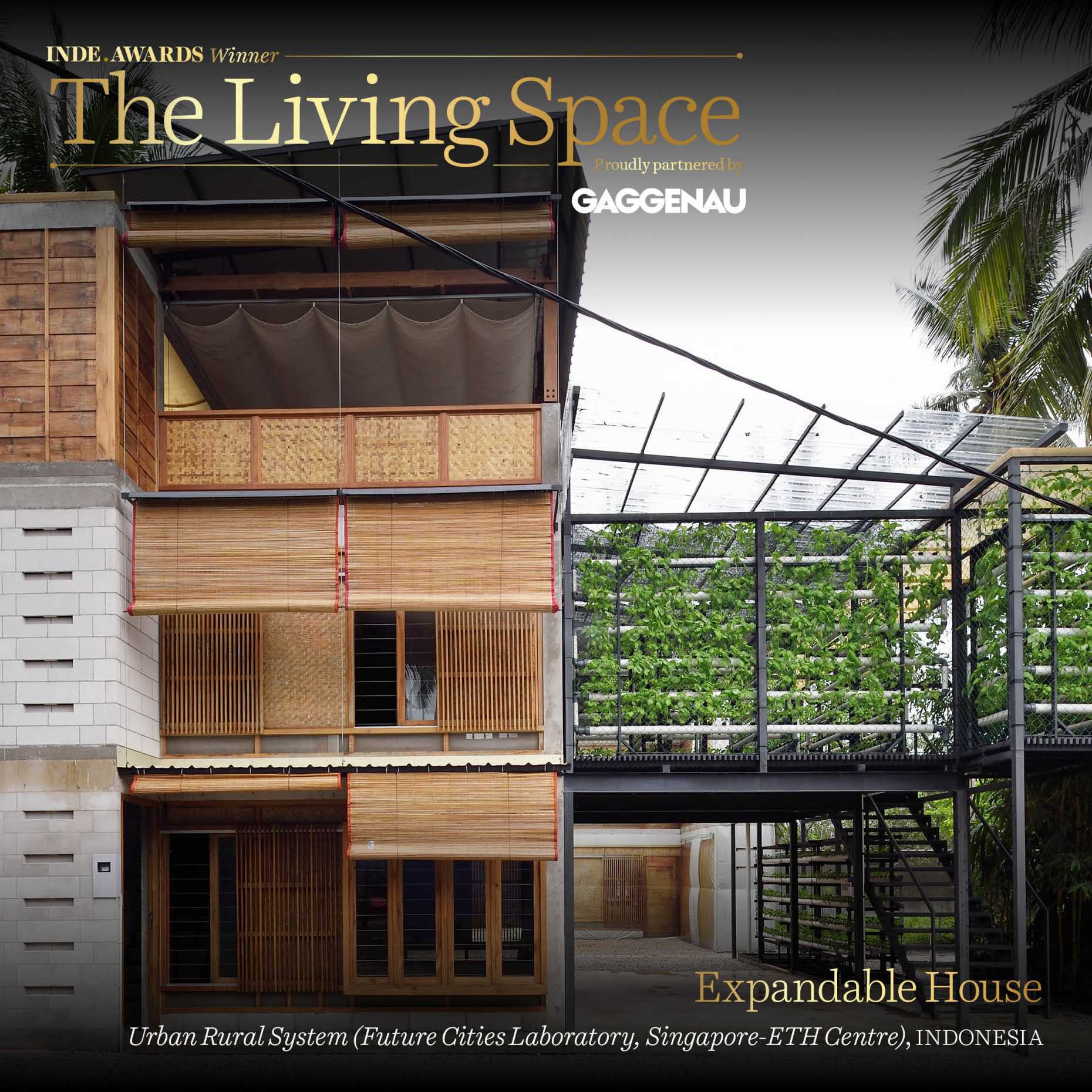Expandable House wins Best Living Space
FCL's Expandable House project received the Best Living Space award at the Inde Award 2020, which celebrates architecture and design excellence in the Indo-Pacific region.

The expandable house (rumah tambah in Bahasa Indonesia, or rubah for short) project by Future Cities Laboratory's Urban-Rural Systems team, has been recognised as the "Best Living Space" in the Indo-Pacific region in the external page Inde.Award 2020. Aptly, the Expandable House, led by Prof Stephen Cairns, is designed as a new dwelling type that can be adapted to different locations in rapidly urbanising regions, such as Batam in Indonesia, where the project is based. In this sense, it intended as a ‘seed’ capable of generating many different kinds of dwelling rather than being a singular, one-off design.
It has been designed specifically for regions around the fringes of cities and towns in Asia, where the impact of rapid urbansiation is most directly felt. In these regions, land is still relatively cheap, new industries and associated jobs are springing up, rural migrants often first arrive in the city, and infrastructure (for transit, water, energy and waste) is often inadequate to support them.
The expandable house tries to respond to this dynamic situation by allowing the dwelling to be flexibly configured around the fluctuating patterns of resource consumption and expenditure, or metabolism, of its residents. Practically this means understanding the patterns of household income generation and expenditure, water, energy and food consumption, as well as waste production. As this metabolism is usually uneven and often precarious, it is important that the architecture can be a dwelling and income generating unit, that manages its own waste, water and energy locally.
The expandable house is designed around the following five principles:
- Sandwich Section. The house provides a roof that can be hoisted, and floor and foundations (the bread) that can support up to three additional floors (the filling). This system allows flexible financing whereby the developer or state housing agency provides the roof and foundations, while the residents provide infill as their circumstances require and budget allows. It also helps accommodate crucial income generating functions (shop, café, garage, cottage industry) along with dwelling.
- Domestic Density. The house encourages domestic densification in the vertical dimension. This supports the benefits of co-location of dwellings and employment. It also helps to reduce the settlement footprint on arable land, and the demand for expensive infrastructures (roads, electrical and potable water networks).
- Decentralized Systems. Rainwater harvesting and solar electricity generating technologies, sewage and septic tank systems, and passive cooling principles are integrated locally with the expandable house, avoiding expensive and often unreliable centralized, or ‘big pipe’, approaches to infrastructure provision.
- Productive Landscapes. The expandable house integrates food and building material production capacity locally. This is achieved by integrating bamboo plantations and kitchen gardens into the planning logic of the house, and helps further diversify the resource base of the expandable house.
- Seed Package. The expandable house is designed as a seed package, containing technologies, material strategies and planning guidelines that can develop in different ways depending on local social, cultural and environmental conditions. We intend that diverse tropical towns will grow from the common seed package.
The expandable house project involves three phases:
- Phase 1 involved design and experimentation at the FCL in Singapore.
- Phase 2 began in 2018 with the construction of a demonstration project in the village of Kampung Batu Besar in Batam, Indonesia. The project began with the first floor (36m2) and has now expanded to its planned limit of three floors (108m2).
- Phase 3 of the project involves conducting post-occupancy studies on the demonstration construction, with the resident community in Batu Besar. The team will also pilot the neighbourhood and township elements of the project at 1:1, such as alleyways, courtyards, public spaces, district cooling, water retention and peer-to-peer energy sharing systems. The team is working with developers in Indonesia to secure a suitable site for a larger-scaled and commercial implementation of Phase 3, which we call Tropical Town.